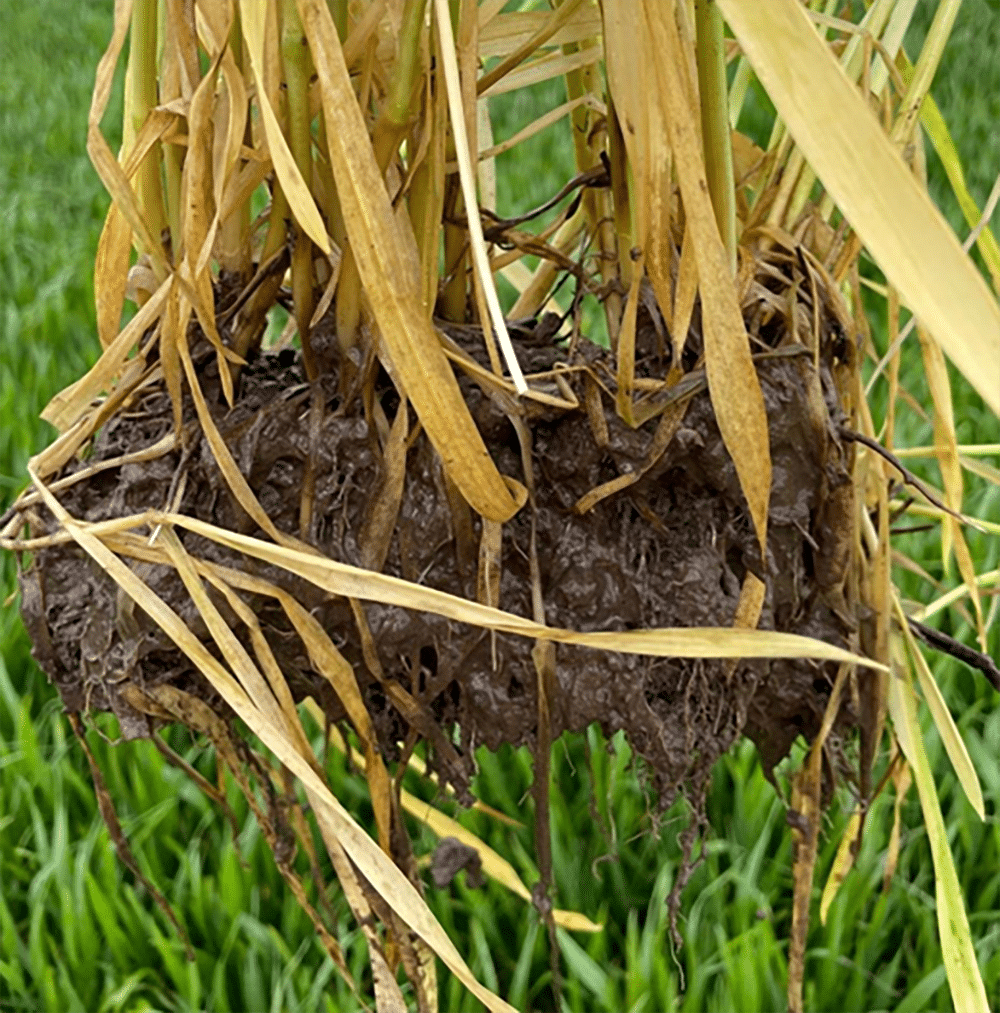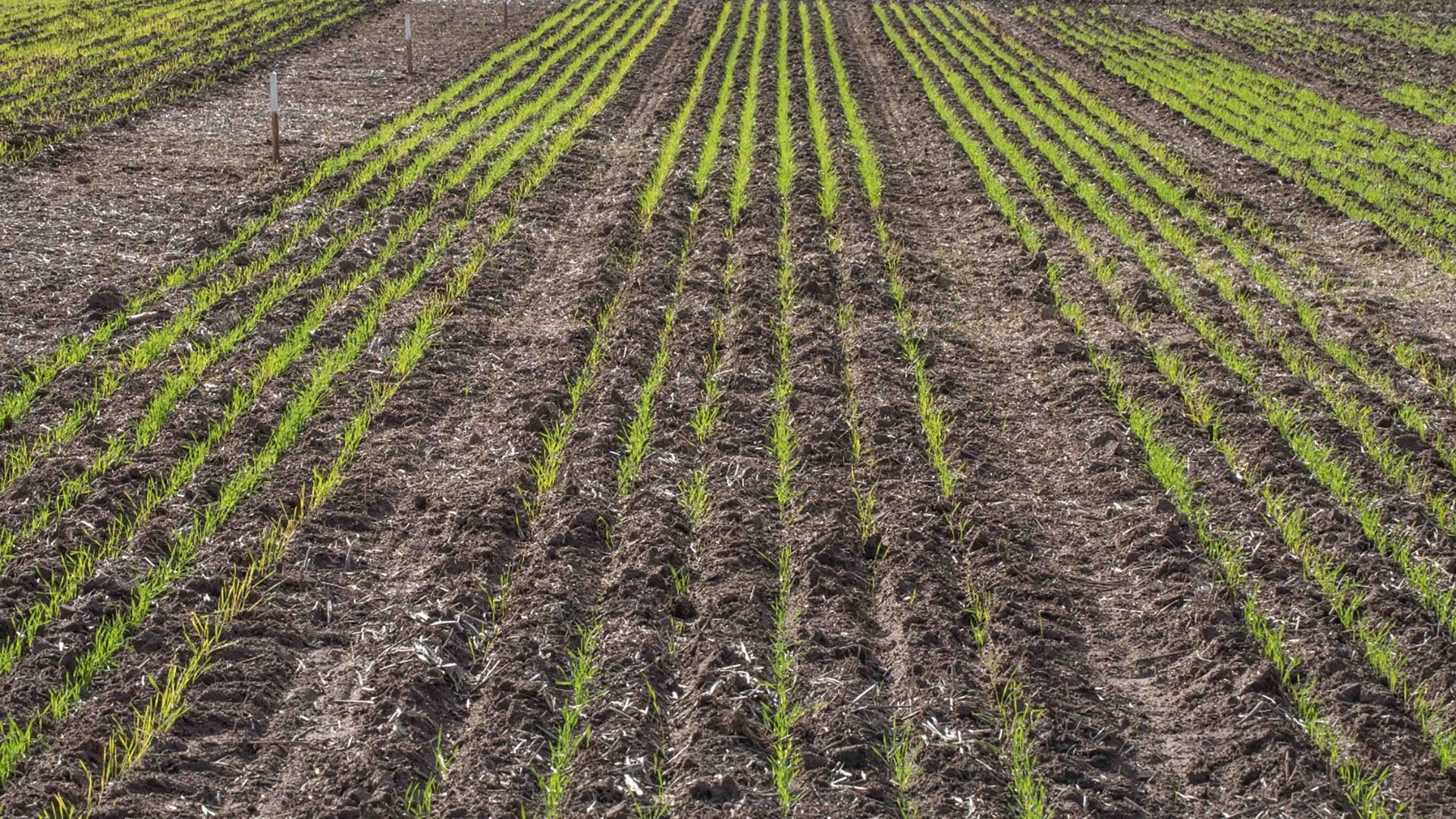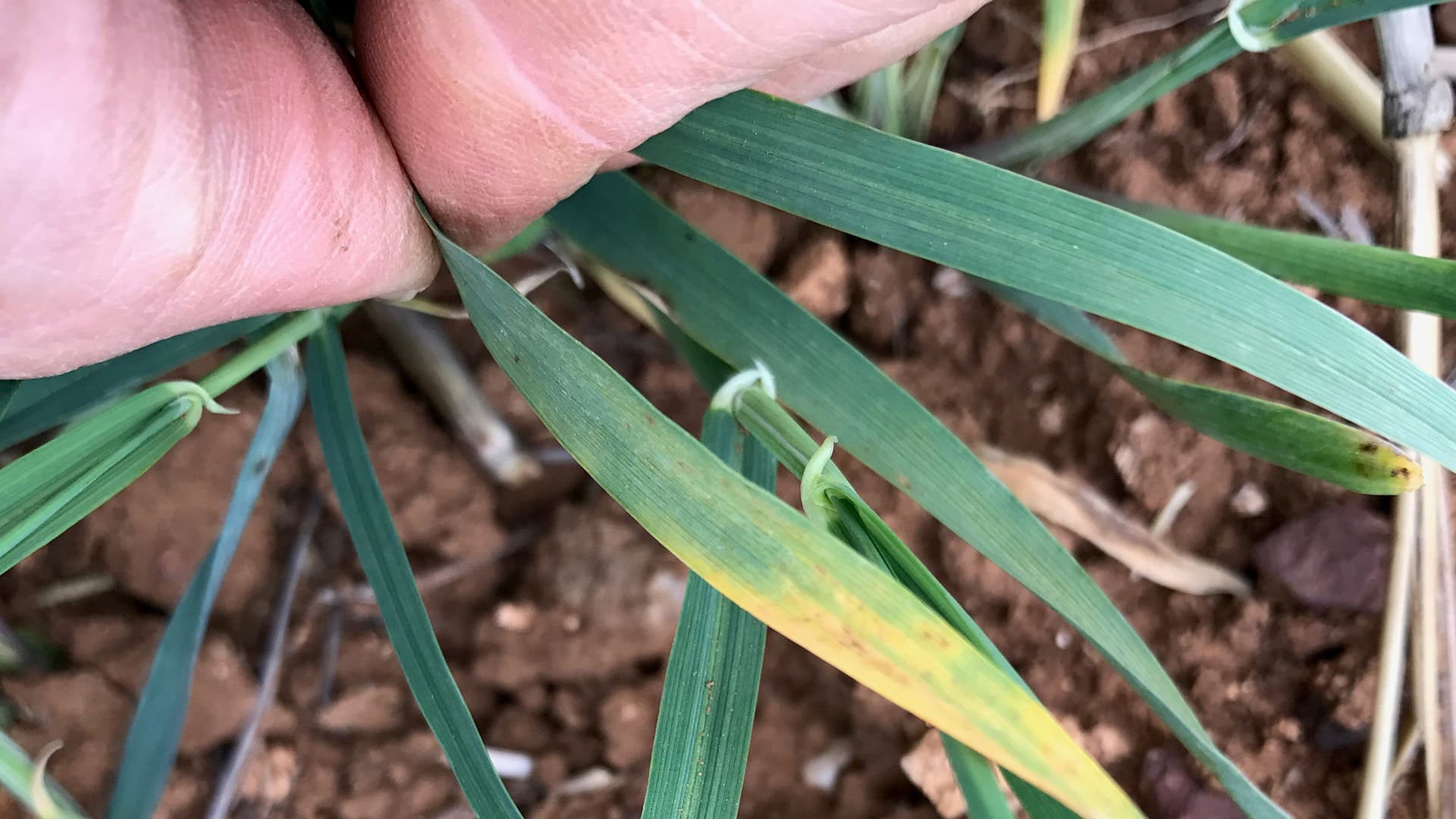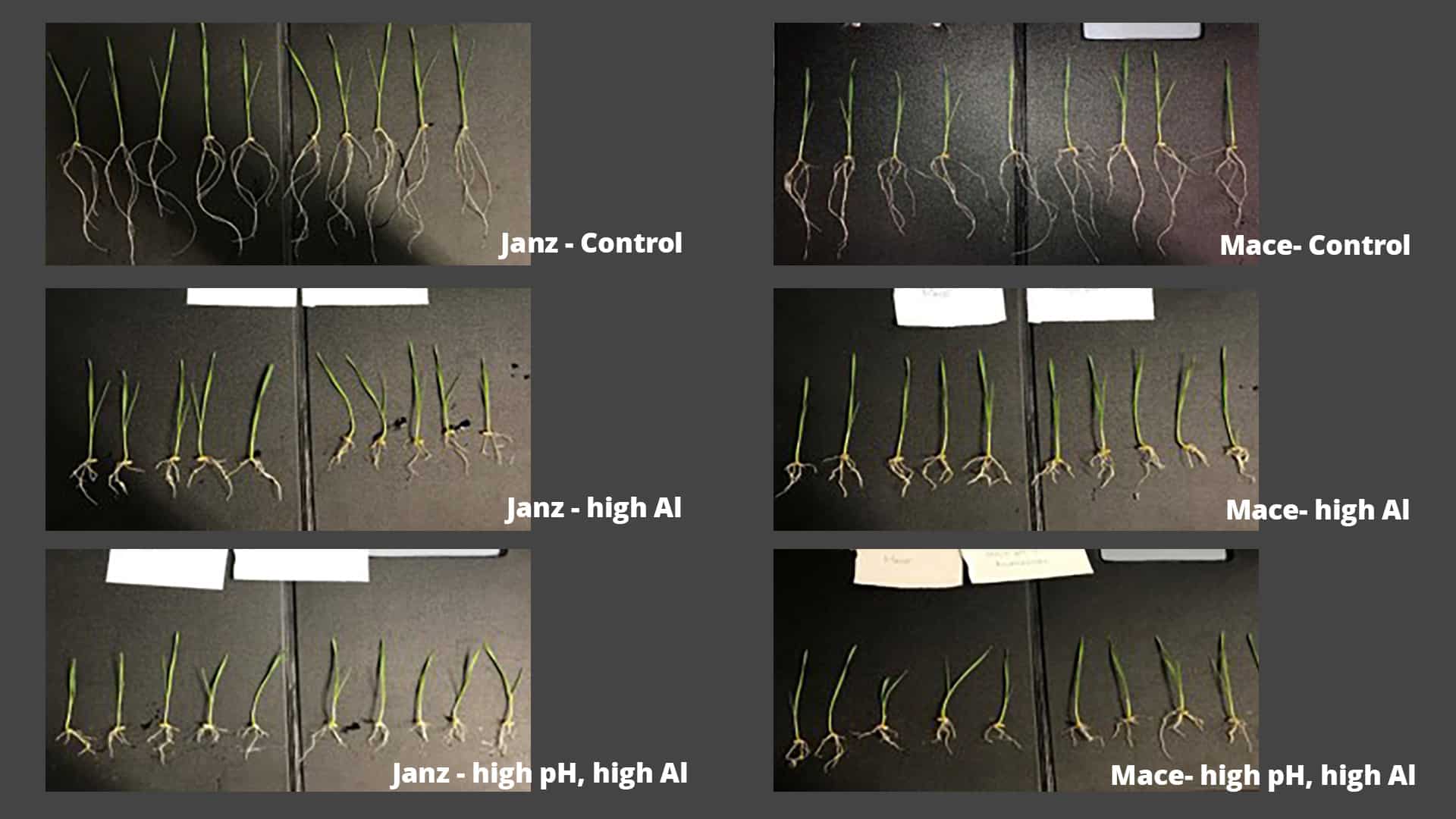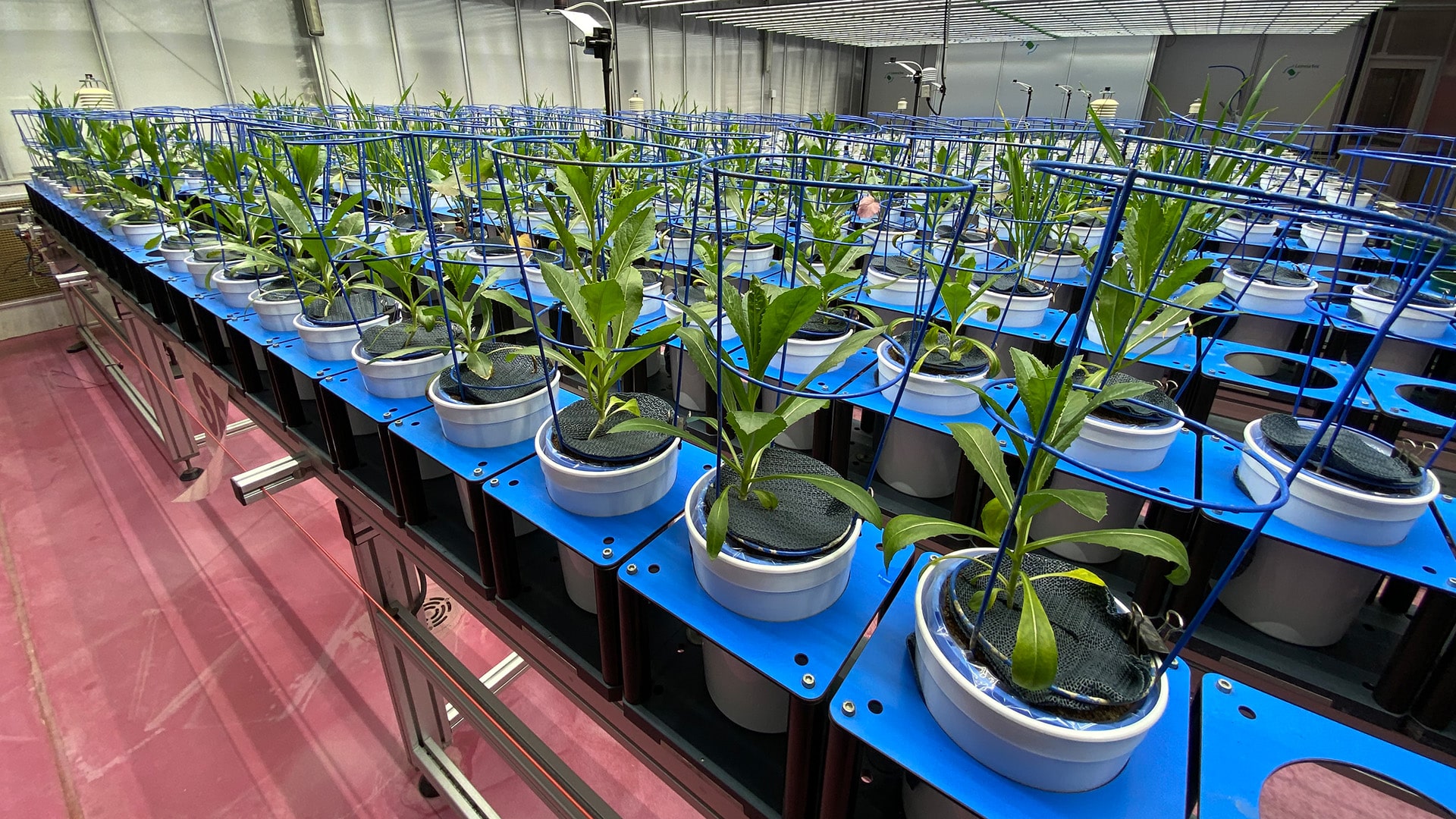START
FINISH
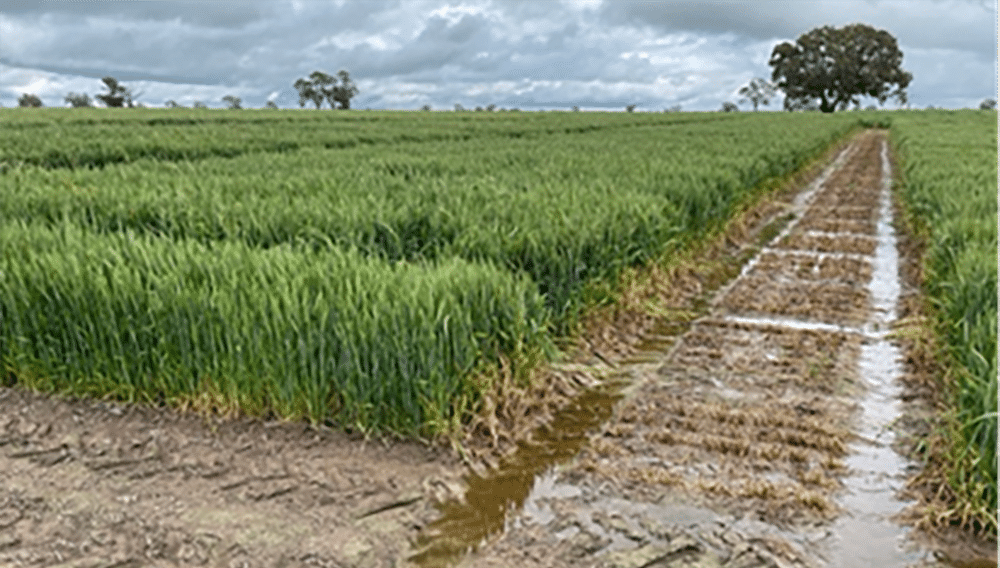
Summary
Nitrogen is water soluble and soil waterlogging can result in significant nitrogen loss. To address this, six nitrogen application strategies and three nitrogen inhibitors were assessed for their ability to prevent nitrogen loss during waterlogging in high-yielding wheats.
Without mitigation, nitrogen losses attributable to denitrification were up to 20 per cent of total nitrogen. However, applying one third of budgeted nitrogen post-waterlogging significantly reduced nitrogen loss and maximised yields. Applying a DMP nitrification inhibitor resulted in peak total nitrogen recovery and high yields.
Background
Waterlogging is a consistent problem for growers in the high rainfall zone of South East SA. Each season, the region can suffer waterlogging of different severity, timing and duration. In these waterlogged soils, applied nitrogen can be rapidly mineralised, leached and lost to the crop.
For the nitrogen-hungry, high yielding wheat varieties grown in the area, this loss of nitrogen can have a significant impact on yields.
Understanding how to limit this denitrification by inhibiting mineralisation and/or applying nitrogen application at optimum times, could help growers close this yield gap.
Research Aims
The core objectives of the project were to:
- Quantify the amount of nitrogen lost from denitrification in a high nitrogen requiring wheat crop under waterlogged conditions.
- Determine the strategies or inhibitors that could reduce nitrogen loss from denitrification.
In The Field
The project set out to assess the outcomes of six different nitrogen application strategies and three urea inhibitors in wheat crops subject to waterlogging.
The field site at Kybybolite received 80mm above average annual rainfall and was waterlogged twice for 10 to 14 days during September and October 2022.
For the trials, treatments of straight urea, polymer coated urea, and DMP nitrification inhibitor EnPower (formerly ENTEC) from Incitec, were compared.
Urea was compared to DMP urea at five increasing rates, from 100kg/ha to 500kg/ha, and six application strategies were assessed using straight urea based on budgeted nitrogen requirements:
- One third of the budget applied two weeks after waterlogging.
- One third of the budget applied four weeks after waterlogging.
- One third of budget applied two weeks after waterlogging but at a higher rate.
- One third of the budgeted applied during waterlogging with foliar UAN.
- Budgeted nitrogen split four times (termed “little bits more often”).
- Increasing the seeding rate by 50 per cent (337 plants per square meter instead of 225) on a standard nitrogen treatment.
Deep N tests were collected before seeding and after harvest, grain yield and total grain nitrogen removal were measured, and the nitrogen content of the stubble biomass was calculated. Every effort was made to measure or prevent other sources of nitrogen loss so that any unaccounted nitrogen could be attributed to denitrification.
Four untreated controls were included to investigate apparent mineralisation.
Results
Only two of the six application strategies resulted in a significant difference to the untreated control, although many smaller yield improvements were recorded in treatments that may warrant further investigation.
Applying one third of the budgeted nitrogen two weeks or four weeks post waterlogging was the only strategy to significantly improve yield (by up to 125 per cent of untreated plots) with no meaningful difference between the two treatments. Both applications were made immediately before rainfall.
There was a ryegrass incursion in the treatment where one third of the budget was applied two weeks post-waterlogging, so this could not be compared to the other treatments. Foliar UAN and smaller more frequent applications both performed poorly. The higher seeding rate resulted in more plants at emergence but had no clear implications for nitrogen loss or nitrogen use efficiency.
The use of DMP nitrification inhibitor reduced losses to denitrification, as indicated by Total Nitrogen Recovery (TNR) calculations and achieved yields similar to the post-waterlogging applications. Applying EnPower nitrogen in excess of crop demand resulted in greater losses (lower TNR results).
Project Participants
Elders Rural Services: Adam Hancock
The Problem
Waterlogging can cause significant denitrification of affected soils, which then has a subsequent yield impact in high-yielding wheat varieties.
The research
This project aimed to identify and assess strategies for minimising nitrogen lost in waterlogging events and protect the yield potential of those paddocks.
More information
Adam Hancock, Elders Rural Services
T: 0427 475 254
E: [email protected]
Value for Growers
The nitrogen and urea inhibitor strategies assessed for this project offer useful guidance and, with further testing and economic analysis, could lead to the development of valuable decision-making tools to help growers minimise losses from these events.
The project also revealed a close correlation between soil redox potential and moisture status that indicates a Redox reduction probe could be a useful indicator of waterlogging. This relationship requires further research.

